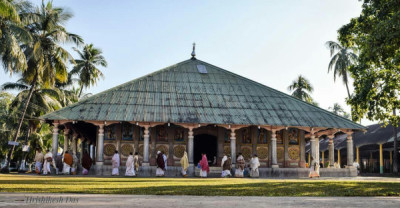In Depth
Historical Significance of Barpeta Satra
Barpeta Satra was founded around 1583 AD, making it one of the oldest and most historically significant Satras in Assam. It played a central role in promoting the Ekasarana Dharma (monotheistic Vaishnavism) and became a major center for spiritual teachings, literature, music, dance, and social reform.
Architectural Splendor of Barpeta Satra
The Satra is a fine example of traditional Assamese architecture. Its massive entrance gate, known as Batsora, and the central prayer hall called the Namghar are key features. The campus also houses the Manikut, where sacred scriptures and artifacts are preserved. With large open spaces, symmetrical huts, and intricately carved woodwork, the Satra exhibits a harmonious blend of art, faith, and functionality.
Cultural and Religious Activities at Barpeta Satra
Barpeta Satra is not only a place of worship but also a hub of cultural learning. It is well-known for:
-
Sattriya Nritya (classical dance form)
-
Borgeet (devotional songs composed by Sankardev and Madhabdev)
-
Dramatic performances like Bhaona
-
Regular religious discourses and prayers
Major festivals like Raas Mahotsav, Janmashtami, and Dol Jatra are celebrated with grandeur, attracting thousands of devotees and tourists.
Why Visit Barpeta Satra?
Visiting Barpeta Satra is like stepping into a living heritage. It offers an immersive experience into Assamese spirituality, culture, and hospitality. Whether you're a history buff, a spiritual seeker, or a cultural enthusiast, the Satra welcomes you with peace and tradition.
How to reach Barpeta Satra?
Where to Stay in Barpeta Satra?
Best Time to Visit Barpeta Satra
-
Timings: 6:00 AM to 8:00 PM (may vary during festivals)
-
Best Time to Visit: October to March
